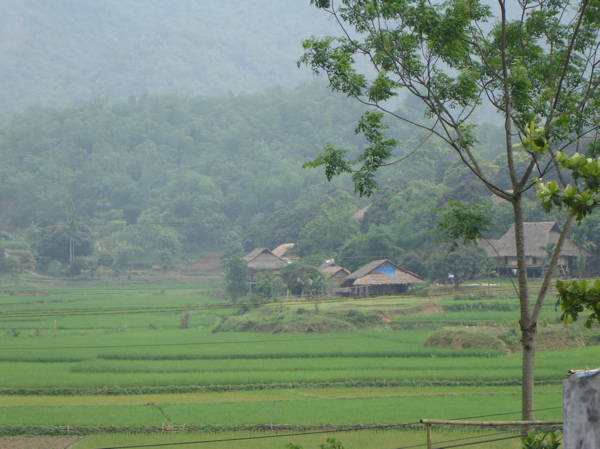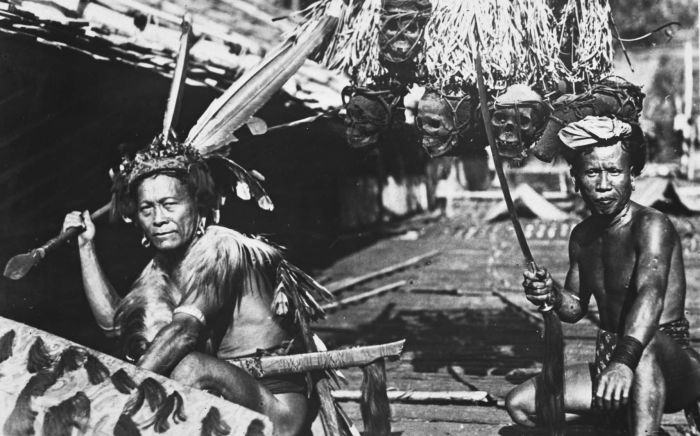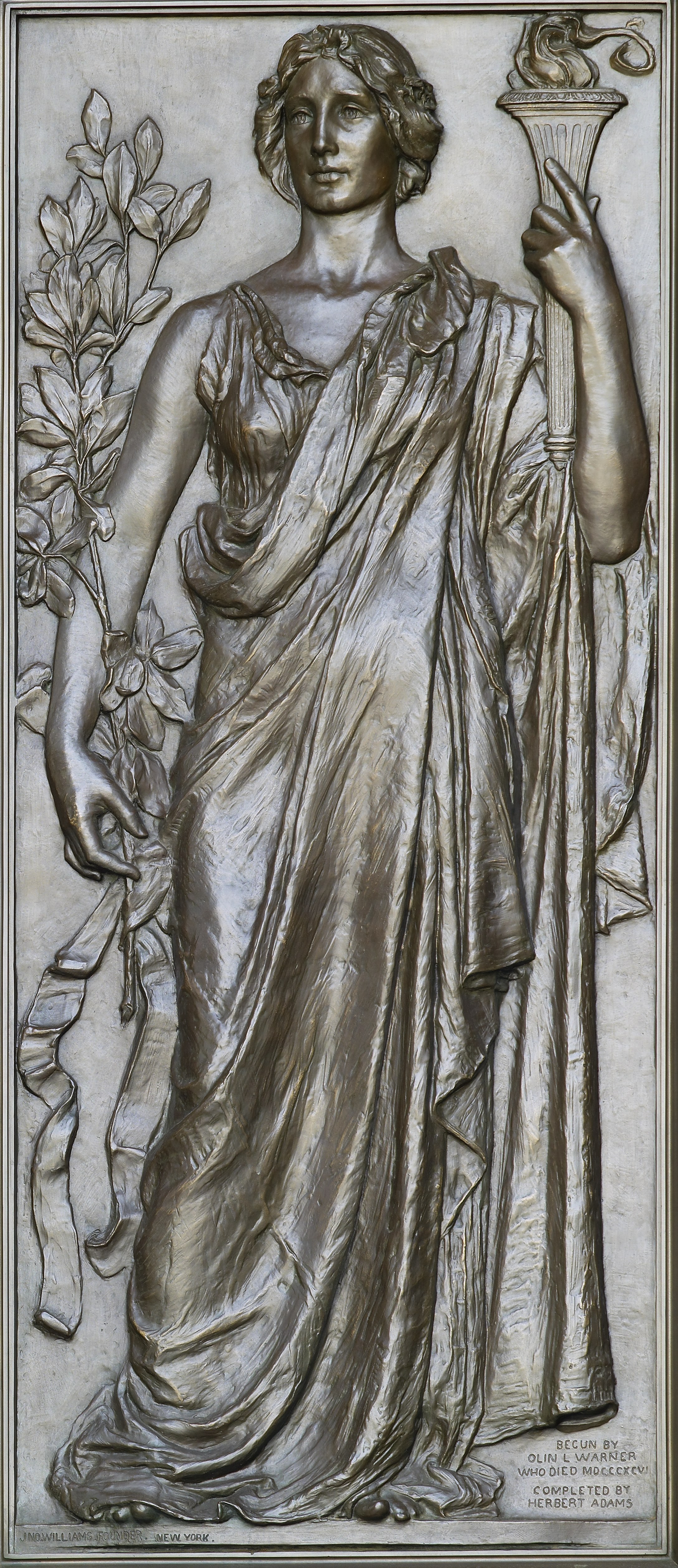|
Keluri
The ''keluri'' or ''keledi'' or ''enkulurai'' (Iban language) is a free reed gourd mouth organ from Sarawak, East Malaysia and Kalimantan made of bamboo and gourd. Historically the ''keledi'' or ''keluri'' was played by the Orang Ulu people who come from Sarawak, Malaysia, the area northwest of the island of Borneo. Among the Iban people the instrument is called ''enkulurai''. Other peoples that have played the instrument include the Kayan people and Kenyah people. In the 21st century, the instrument has largely disappeared; while not extinct, researchers have had a difficult time finding anyone making or using the instruments. The instrument is similar to the khaen, played by the Lao people, Thai people and Muong people of Cambodia, Thailand and Vietnam. Shapes The Keluri consists of 4-6 bamboo pipes (sizes varying, 75 to 105 cm long) tied together or glued with cerumen and connected to the base, a gourd-shell wind chamber, which has been dried. The wind chamber may be 8 to ... [...More Info...] [...Related Items...] OR: [Wikipedia] [Google] [Baidu] |
Gourd Mouth Organ
The gourd mouth organ is a free reed mouth organ played across East and Southeast Asia. It consists of a gourd wind chest with several bamboo or bronze pipes inserted on top of it, the numbers of pipes differing from region to region.Sachs, C. (2012). The history of musical instruments. Courier Corporation. The gourd mouth organ is closely associated with cultural minorities in Asian countries; thus, its styles are diverse, and different counterparts can be seen across different cultures.Uchida, R., & Catlin, A. (2008). Music of upland minorities in Burma, Laos, and Thailand. The Garland Handbook of Southeast Asian Music, 303-316. In southern China, the generic name of the gourd mouth organ is ''Hulu Sheng'' Thrasher, A. R. (2015). Hulu sheng. In New Grove Dictionary of Music and Musicians. Oxford University Press. Retrieved from https://doi.org/10.1093/gmo/9781561592630.article.L2281219 ( 葫芦 笙; pinyin: húlúshēng; literally "gourd sheng"). The accompaniment of t ... [...More Info...] [...Related Items...] OR: [Wikipedia] [Google] [Baidu] |
Mouth Organs
A mouth organ is any free reed aerophone with one or more air chambers fitted with a free reed. Though it spans many traditions, it is played universally the same way by the musician placing their lips over a chamber or holes in the instrument, and blowing or sucking air to create a sound. Many of the chambers can be played together or each individually. The mouth organ can be found all around the world and is known by many different names and seen in many different traditions. The most notable variations include the harmonica, and Asian free reed wind instruments consisting of a number of bamboo pipes of varying lengths fixed into a wind chest; these include the ''sheng'', ''khaen'', ''lusheng'', ''yu'', ''shō'', and '' saenghwang''. The melodica, consisting of a single tube that is essentially blown through a keyboard, is another variation. Gallery File:Cass-muha-1880.jpg, C. A. Seydel Söhne Harmonica (1880) File:Mouth organ (or symphonium) (c.1830, London) by Charles W ... [...More Info...] [...Related Items...] OR: [Wikipedia] [Google] [Baidu] |
Muong People
The Mường (Mường language: ngài Mõl (Mường Bi), ngài Mường; ) are an ethnic group native to northern Vietnam. The Mường is the country's third largest of 53 minority groups, with an estimated population of 1.45 million (according to the 2019 census). The Mường people inhabit a mountainous region of northern Vietnam centered in Hòa Bình Province where they are a majority and some districts of Phú Thọ province and Thanh Hóa Province. They speak a Vietic language related to the Vietnamese language and share an ancient ethnic roots with the Vietnamese (Kinh) people. Etymology The word Mường in Vietnamese is etymologically related to the word mueang from the Tai languages, meaning "cultivated land" or "community", and referred to pre-modern semi-independent city-states or principalities in mainland Southeast Asia. This comes from their close association with the Tai peoples. The Mường call the Tai as ɲew, Nyo or Âu; while referring to themse ... [...More Info...] [...Related Items...] OR: [Wikipedia] [Google] [Baidu] |
Borobudur
Borobudur, also transcribed Barabudur ( id, Candi Borobudur, jv, ꦕꦤ꧀ꦝꦶꦧꦫꦧꦸꦝꦸꦂ, Candhi Barabudhur) is a 9th-century Mahayana Buddhist temple in Magelang Regency, not far from the town of Muntilan, in Central Java, Indonesia. It is the world's largest Buddhist temple. The temple consists of nine stacked platforms, six square and three circular, topped by a central dome. It is decorated with 2,672 relief panels and originally 504 Buddha statues. The central dome is surrounded by 72 Buddha statues, each seated inside a perforated stupa. Built in the 9th century during the reign of the Sailendra Dynasty, the temple design follows Javanese Buddhist architecture, which blends the Indonesian indigenous tradition of ancestor worship and the Buddhist concept of attaining nirvāṇa. The temple demonstrates the influences of Gupta art that reflects India's influence on the region, yet there are enough indigenous scenes and elements incorporated to make Bo ... [...More Info...] [...Related Items...] OR: [Wikipedia] [Google] [Baidu] |
Tenggarong
Tenggarong is a town in and the capital of Kutai Kartanegara Regency of East Kalimantan Province, Indonesia. The former Kutai Kartanegara Sultanate's capital was likewise located in Tenggarong. Historically, the then capital was called ''Tepian Pandan''. At some point, the Kutai Kartanegara Sultan, Aji Muhammad Muslihuddin, changed the name from ''Tepian Pandan'' to ''Tangga Arung'' (literally ''house of king''). In application, the people of Kutai would then shorten this name by combining the two words ''Tangga Arung'' to ''Tenggarong''. Climate Tenggarong has a tropical rainforest climate A tropical rainforest climate, humid tropical climate or equatorial climate is a tropical climate sub-type usually found within 10 to 15 degrees latitude of the equator. There are some other areas at higher latitudes, such as the coast of southea ... (Af) with heavy rainfall year-round. References Kutai Kartanegara Regency Populated places in East Kalimantan Regency seats of E ... [...More Info...] [...Related Items...] OR: [Wikipedia] [Google] [Baidu] |
Pentatonic Scale
A pentatonic scale is a musical scale with five notes per octave, in contrast to the heptatonic scale, which has seven notes per octave (such as the major scale and minor scale). Pentatonic scales were developed independently by many ancient civilizations and are still used in various musical styles to this day. There are two types of pentatonic scales: those with semitones (hemitonic) and those without (anhemitonic). Types Hemitonic and anhemitonic Musicology commonly classifies pentatonic scales as either ''hemitonic'' or ''anhemitonic''. Hemitonic scales contain one or more semitones and anhemitonic scales do not contain semitones. (For example, in Japanese music the anhemitonic ''yo'' scale is contrasted with the hemitonic ''in'' scale.) Hemitonic pentatonic scales are also called "ditonic scales", because the largest interval in them is the ditone (e.g., in the scale C–E–F–G–B–C, the interval found between C–E and G–B). (This should not be co ... [...More Info...] [...Related Items...] OR: [Wikipedia] [Google] [Baidu] |
Polychord
In music and music theory, a polychord consists of two or more chords, one on top of the other. In shorthand they are written with the top chord above a line and the bottom chord below,Policastro, Michael A. (1999). ''Understanding How to Build Guitar Chords and Arpeggios'', p. 168. . for example F upon C: . The use of polychords may suggest bitonality or polytonality. Harmonic parallelism may suggest bichords. Examples may be found in Igor Stravinsky's '' Petrushka'', p. 15, and ''Rite of Spring'', "Dance of the Adolescents" (1921) (see Petrushka chord). In the polychords in the image above, the first might suggest a thirteenth chord, the second may suggest a D minor ninth chord with upper extensions, but the octave separation of the 3rd makes the suggestion of two independent triads a minor ninth apart even more likely, and the fourth is a split-third chord. Extended chords contain more than one triad, and so can be regarded as a type of polychord: For example ... [...More Info...] [...Related Items...] OR: [Wikipedia] [Google] [Baidu] |
Dayak People
The Dayak (; older spelling: Dajak) or Dyak or Dayuh are one of the native groups of Borneo. It is a loose term for over 200 riverine and hill-dwelling ethnic groups, located principally in the central and southern interior of Borneo, each with its own dialect, customs, laws, territory, and culture, although common distinguishing traits are readily identifiable. Dayak languages are categorised as part of the Austronesian languages. The Dayak were animist ( Kaharingan and Folk Hindus) in belief; however, since the 19th century there has been mass conversion to Christianity as well as Islam due to the spreading of Abrahamic religions. Etymology It is commonly assumed that the name originates from the Bruneian and Melanau word for “interior people”, without any reference to an exact ethnic group. The term was adopted by Dutch and German authors as an umbrella term for any non-Muslim natives of Borneo. Thus, the difference between Dayaks and non-Dayaks natives could be ... [...More Info...] [...Related Items...] OR: [Wikipedia] [Google] [Baidu] |
West Kalimantan
West Kalimantan ( id, Kalimantan Barat) is a province of Indonesia. It is one of five Indonesian provinces comprising Kalimantan, the Indonesian part of the island of Borneo. Its capital city is Pontianak. The province has an area of 147,307 km2, and had a population of 4,395,983 at the 2010 CensusBiro Pusat Statistik, Jakarta, 2011. and 5,414,390 at the 2020 Census. Ethnic groups include the Dayak, Malay, Chinese, Javanese, Bugis, and Madurese. The borders of West Kalimantan roughly trace the mountain ranges surrounding the vast watershed of the Kapuas River, which drains most of the province. The province shares land borders with Central Kalimantan to the southeast, East Kalimantan to the east, and the Malaysian territory of Sarawak to the north. West Kalimantan is an area that could be dubbed "The Province of a Thousand Rivers". The nickname is aligned with the geographical conditions that have hundreds of large and small rivers that which can be and often are ... [...More Info...] [...Related Items...] OR: [Wikipedia] [Google] [Baidu] |
YouTube
YouTube is a global online video sharing and social media platform headquartered in San Bruno, California. It was launched on February 14, 2005, by Steve Chen, Chad Hurley, and Jawed Karim. It is owned by Google, and is the second most visited website, after Google Search. YouTube has more than 2.5 billion monthly users who collectively watch more than one billion hours of videos each day. , videos were being uploaded at a rate of more than 500 hours of content per minute. In October 2006, YouTube was bought by Google for $1.65 billion. Google's ownership of YouTube expanded the site's business model, expanding from generating revenue from advertisements alone, to offering paid content such as movies and exclusive content produced by YouTube. It also offers YouTube Premium, a paid subscription option for watching content without ads. YouTube also approved creators to participate in Google's AdSense program, which seeks to generate more revenue for both parties. ... [...More Info...] [...Related Items...] OR: [Wikipedia] [Google] [Baidu] |
Cerumen
Earwax, also known by the medical term cerumen, is a brown, orange, red, yellowish or gray waxy substance secreted in the ear canal of humans and other mammals. It protects the skin of the human ear canal, assists in cleaning and lubrication, and provides protection against bacteria, fungi, and water. Earwax consists of dead skin cells, hair, and the secretions of cerumen by the ceruminous and sebaceous glands of the outer ear canal. Major components of earwax are long chain fatty acids, both saturated and unsaturated, alcohols, squalene, and cholesterol. Excess or compacted cerumen is the buildup of ear wax causing a blockage in the ear canal and it can press against the eardrum or block the outside ear canal or hearing aids, potentially causing hearing loss. Physiology Cerumen is produced in the cartilaginous portion which is the outer third portion of the ear canal. It is a mixture of viscous secretions from sebaceous glands and less-viscous ones from modif ... [...More Info...] [...Related Items...] OR: [Wikipedia] [Google] [Baidu] |
Researcher Playing Kadedek Mouth Organ, Engkurai, Borneo
Research is "creative and systematic work undertaken to increase the stock of knowledge". It involves the collection, organization and analysis of evidence to increase understanding of a topic, characterized by a particular attentiveness to controlling sources of bias and error. These activities are characterized by accounting and controlling for biases. A research project may be an expansion on past work in the field. To test the validity of instruments, procedures, or experiments, research may replicate elements of prior projects or the project as a whole. The primary purposes of basic research (as opposed to applied research) are documentation, discovery, interpretation, and the research and development (R&D) of methods and systems for the advancement of human knowledge. Approaches to research depend on epistemologies, which vary considerably both within and between humanities and sciences. There are several forms of research: scientific, humanities, artistic, economic ... [...More Info...] [...Related Items...] OR: [Wikipedia] [Google] [Baidu] |








